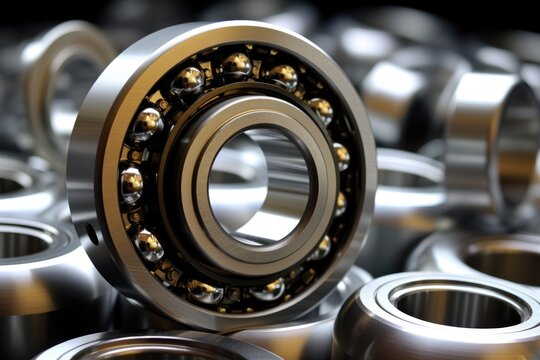Understanding Bearing Corrosion
Understanding Bearing Corrosion
Blog Article

Every year, industries lose millions due to equipment failures caused by bearing corrosion. This phenomenon often goes unnoticed until it manifests as costly downtime or catastrophic failure. For instance, a study by the National Institute of Standards and Technology (NIST) estimates that corrosion-related failures can increase maintenance costs by up to 30%. This staggering statistic raises the question: how can businesses effectively implement Bearing corrosion prevention strategies to safeguard their operations?
Understanding Bearing Corrosion
Bearing corrosion occurs when the protective oxide layer of metal surfaces is compromised, allowing moisture and corrosive agents to penetrate. This is especially prevalent in environments exposed to water, chemicals, or extreme temperatures. For example, a steel bearing operating in a marine environment is at a significantly higher risk of corrosion compared to one in a controlled factory setting. Understanding the specific conditions that lead to corrosion is the first step in prevention.
Common Causes of Bearing Corrosion
Corrosion can arise from several sources, including:
- Environmental Factors: Humidity, saltwater, and chemical exposure can all contribute to corrosion. For example, bearings in food processing facilities must withstand not only moisture but also cleaning agents that can be corrosive.
- Improper Lubrication: Insufficient or contaminated lubrication can accelerate wear and lead to corrosion. Using the wrong lubricant for a specific application can trap moisture and create a breeding ground for rust.
- Mechanical Stress: Overloading bearings can lead to microscopic damage, creating pathways for corrosion to initiate. A well-designed system that considers load limits is essential for preventing such issues.
[IMAGE]
Effective Strategies for Bearing Corrosion Prevention
Implementing effective Bearing corrosion prevention strategies can save companies considerable time and money. Here are some of the most effective methods:
1. Material Selection
Choosing the right materials is crucial for corrosion resistance. Stainless steel, for instance, offers excellent resistance to corrosion but may not be suitable for all applications due to cost. In contrast, coated bearings can provide a balance between affordability and durability, making them a popular choice in various industries.
2. Advanced Lubrication Techniques
Utilizing high-performance lubricants can significantly reduce the risk of corrosion. Synthetic oils, for example, often contain additives that inhibit rust and corrosion. Additionally, regular lubrication schedules should be established to ensure that bearings are consistently protected.
3. Environmental Control
Controlling the environment around bearings can be an effective way to reduce corrosion risk. This may include installing dehumidifiers in indoor facilities, using protective enclosures, or applying corrosion inhibitors in environments where moisture is unavoidable. Proper ventilation and temperature control also play critical roles in maintaining optimal conditions for bearing performance.
4. Routine Maintenance and Inspection
Implementing a proactive maintenance schedule can help catch corrosion early. Regular inspections allow for the identification of wear patterns and potential corrosion before they escalate into more significant issues. Tools like ultrasonic testing and vibration analysis can provide insights into bearing health and performance.
Conclusion
With the right strategies in place, businesses can mitigate the risks associated with bearing corrosion. By focusing on material selection, lubrication, environmental conditions, and routine maintenance, companies not only extend the lifespan of their bearings but also enhance operational efficiency. As industries continue to evolve, adopting a proactive approach to Bearing corrosion prevention will be vital in ensuring longevity and reliability in machinery.
Report this page